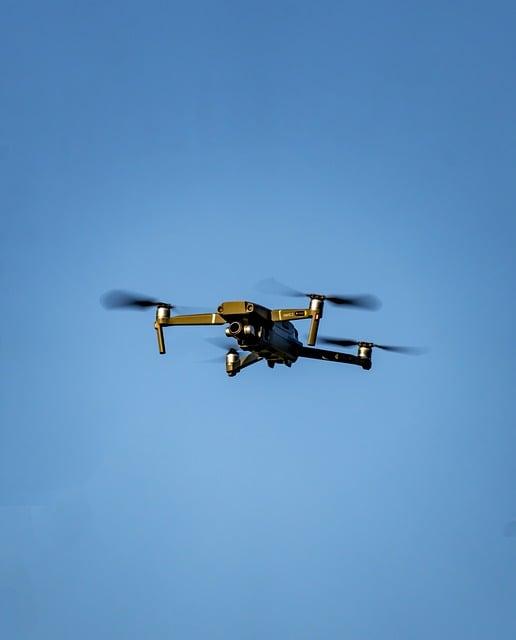In a digital world overflowing with multimedia content, you’re likely swimming in a sea of audio and video files, especially those ubiquitous MP4s. Whether it’s a cherished home video, a catchy tune, or an informative lecture, MP4 files have become the go-to format for many. But what happens when you need a high-quality sound format that delivers superior audio fidelity? Enter WAV files—a powerful ally in the quest for crisp, clear sound without the compression woes. If you’ve ever scratched your head over how to convert those MP4s into WAVs or wondered why you should bother with the switch, you’re in the right place. This guide is here to demystify the process, breaking it down into simple, manageable steps. Let’s transform your files and unleash a whole new level of audio quality together!
Understanding the Need for WAV Files in Your Audio Library
When diving into the world of audio files, you might wonder why WAV files are often the go-to choice for many audio enthusiasts and professionals alike. One significant reason is their lossless quality. Unlike other formats that can compress sound data, WAV files retain the original audio signals in their purest form, making them ideal for music production, sound design, and archiving important audio recordings. Let’s be honest, who doesn’t want that crisp, clear sound that feels like you’re right in the studio with the artist? Imagine listening to your favorite song and feeling every note and beat as if it were live – that’s the magic of WAV files.
But it’s not just about sound quality; WAV files also offer ease of editing. When you’re working on an audio project, having a file that can withstand the rigors of multiple edits and renderings without compromising its integrity is invaluable. If you’re producing a podcast or creating soundtracks, you’ll appreciate the flexibility that WAV offers. Plus, they’re universally supported by most audio editing software, making them a hassle-free option. So, when curating your audio library, having a collection of WAV files means you’re equipped to handle top-notch audio quality for any project, big or small.
Choosing the Right Tools for Seamless MP4 to WAV Conversion
When diving into the world of MP4 to WAV conversion, the tools you choose can make all the difference. Just like a craftsman selects the right tools for a project, having the right software can ensure a smooth and hassle-free conversion process. Online converters are incredibly convenient; they allow you to flip MP4 into WAV formats without needing to download anything. Imagine being able to convert files right from your browser while sipping your morning coffee! Here are some popular options to consider:
- Zamzar: A user-friendly platform, perfect for quick conversions.
- CloudConvert: Offers file management features and supports a wide array of formats.
- FileZigZag: Good for batch processing and multiple file types.
On the flip side, if you’re looking for something more robust, desktop software might be the way to go. These tools usually come packed with features that can adjust quality settings and even edit audio before conversion. Think of them like a Swiss Army knife for audio files—offering everything from batch processing to advanced editing capabilities. Here’s a quick comparison of popular choices:
| Tool | Type | Key Feature |
|---|---|---|
| VLC Media Player | Desktop | Extensive format support |
| Freemake Audio Converter | Desktop | User-friendly interface |
| Audacity | Desktop | Audio editing capabilities |
Choosing the right tool is about finding what suits your needs best, whether that’s convenience or in-depth editing options.
Step-by-Step Guide: Transforming Your MP4 Files Effortlessly
Converting your MP4 files to WAV format might sound daunting, but it’s really as easy as pie! First, pick the right software or online tool. There are plenty out there, some of which even let you drag and drop your files. Isn’t that easy? Once you have your tool ready, the magic begins. Just upload your MP4 file and select WAV as your desired format. You might wonder why WAV? Well, think of it as the high-quality cousin of MP3. It retains more audio detail, making it perfect for music production or simply enjoying your favorite tunes like never before!
After selecting the format, hit that conversion button and watch the transformation unfold right before your eyes. Once the process is complete, don’t forget to check the destination folder to find your sleek new WAV file. To take your experience a notch higher, consider batch converting multiple files at once! Here’s a quick table showing the benefits of WAV over MP4 to help you understand why this conversion rocks:
<table class="wp-block-table">
<thead>
<tr>
<th>Feature</th>
<th>WAV</th>
<th>MP4</th>
</tr>
</thead>
<tbody>
<tr>
<td><strong>Audio Quality</strong></td>
<td>High</td>
<td>Medium</td>
</tr>
<tr>
<td><strong>File Size</strong></td>
<td>Large</td>
<td>Smaller</td>
</tr>
<tr>
<td><strong>Use Cases</strong></td>
<td>Music Production</td>
<td>Streaming</td>
</tr>
</tbody>
</table>
</p>
Tips for Optimizing Audio Quality During Conversion
When you’re transforming your MP4 files into WAV formats, capturing the best possible audio quality is essential. To kick things off, ensure you’re using reliable software or tools for your conversion. Always choose options that specifically highlight high-bitrate conversions. A higher bitrate means more audio data, resulting in richer sound. Additionally, consider the sample rate; a higher sample rate can also enhance audio quality, much like treating your audio files to a luxurious spa day. Remember, it’s not just about speed—taking your time with the conversion process can make a world of difference.
It’s also crucial to prepare your audio files before conversion. Here are a few practices to keep in mind:
- Check the original quality: Ensure your MP4 is not already compromised.
- Avoid unnecessary edits: Repeatedly editing and saving can degrade quality.
- Choose the right settings: Opt for stereo if your audio benefits from it, otherwise stick with mono.
Consider a simple comparison table to visualize the impact of different settings on audio quality:
| Setting | Bitrate | Sample Rate | Expected Quality |
|---|---|---|---|
| Standard | 128 kbps | 44.1 kHz | Average |
| High | 256 kbps | 48 kHz | Good |
| Premium | 320 kbps | 96 kHz | Excellent |
Utilizing these tips can significantly improve the outcome of your conversions, ensuring your audio sounds as pristine as your favorite vinyl record!
To Wrap It Up
As we wrap up this journey through the world of audio file conversions, transforming your MP4 files into WAV format can be as refreshing as a cool breeze on a hot summer day. Now that you have the tools and tips to make this swap, think of all the soundscapes and melodies you can enhance. Whether you’re an aspiring musician, a podcast creator, or just someone who loves crisp and clear audio quality, you’ve unlocked the door to a richer listening experience.
So, grab those MP4s and dive in! Converting your files is not just about changing formats; it’s about elevating your audio game. With the knowledge you’ve gained, you’re well-equipped to tackle these conversions with confidence. Remember, the world of sound is vast and varied—don’t hesitate to explore it further. Happy converting, and may your playlists be forever polished!





